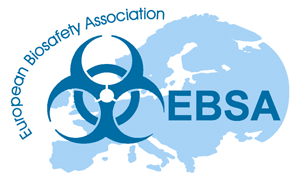About Pre conference course A. The holy grail in biosafety: risk assessment
Pre conference course A. The holy grail in biosafety: risk assessment
Instructors
Urs Pauli and Linda Huesser
Description
Even though national and international regulations provide a framework on how to work safely with a certain pathogen or hazard, specific risk assessments are indispensable to identify appropriate safety measures to ensure that the risk associated with working with biological agents is on an acceptable level. This course will set out the principles of a risk assessment process, addressing the definition of key steps, risk evaluation and identification of high-risk laboratory procedures or selection of risk control measures.
At the end of the course participants will be able to identify and understand what is a biological risk and which measures have to be taken in order to mitigate this risk, i.e. how to perform a full risk assessment. They will learn about the central role of risk assessment in the field of biological safety and which multiple factors are relevant for its assessment. In interactive sessions and group work, the participants will develop the capability to do a risk assessment suitable to different situations. During the course, the participants will perform a risk assessment in the field in which they work with the help of case studies and discuss the resulting risk assessment with the other participants.
The course is targeted to persons that are at the beginning of their career or want to understand the basic rules for performing a specific risk assessment in a laboratory environment.
Learning objectives:
- Participants will understand the elements of biological risk assessment processes in different laboratory environments
- Participants will be able to define effective mitigation strategies
- Participants will be able to perform a risk assessment
The course will require a minimum of 8 participants and the class size is limited to 24 participants.
Main topics
In the course the following topics will be addressed:
- Introduction into the tasks of biological safety and reference to international rules and documents
- Essential elements of and methodologies to perform risk assessment
- Definition of risks, resulting consequences and subsequent application of these findings to mitigation measures
- Assessing the risk of biological materials (microorganisms, cells, tissues) or laboratory procedures / activities (diagnostics, research, production)
- Special aspects of risks: Pregnancy, underlying diseases, immune deficiencies, risk perception of workers
- Defining measures to control / minimize the risk (containment, GMT, PPE, training)
- Is the long-standing concept of risk groups still applicable?
- Performing risk assessments according to different case studies
CWA 16335:2011, annex C reference
-
C.2.1.2.5 Biorisk assessment and Management
-
C.2.1.2.6 General principles of environmental safety
